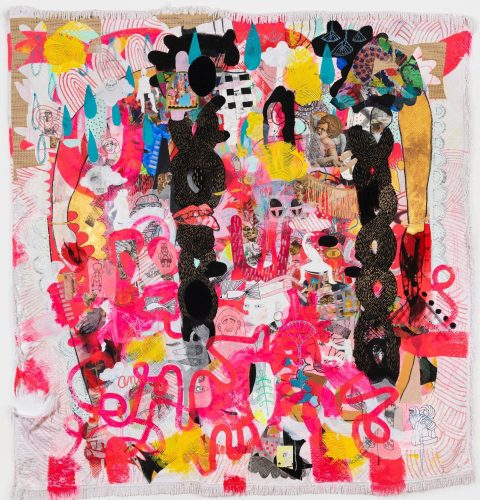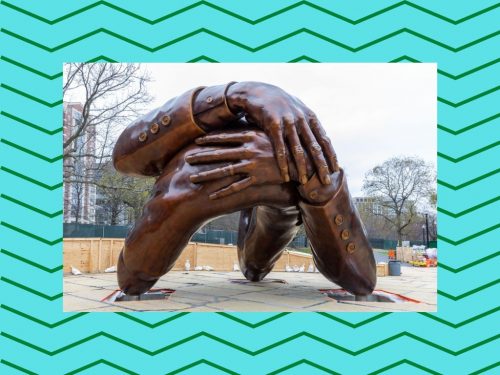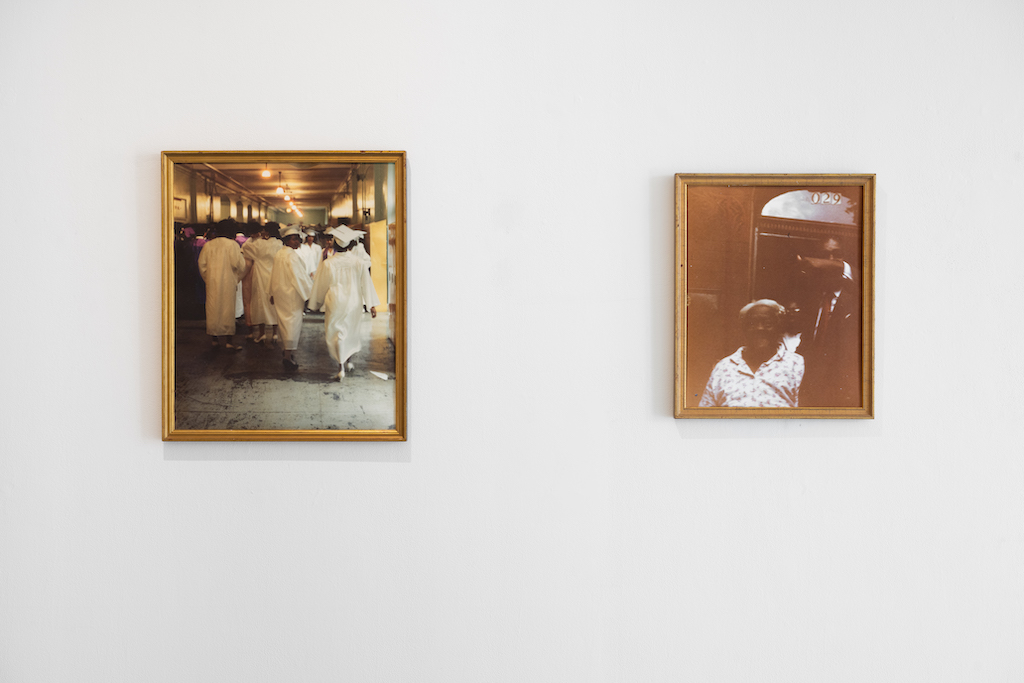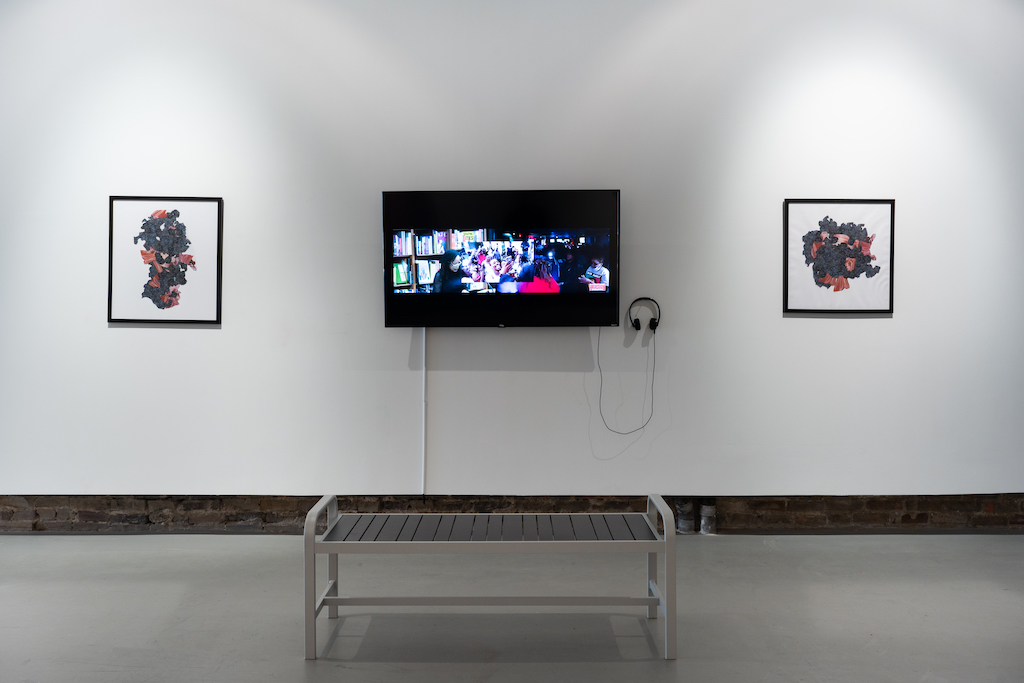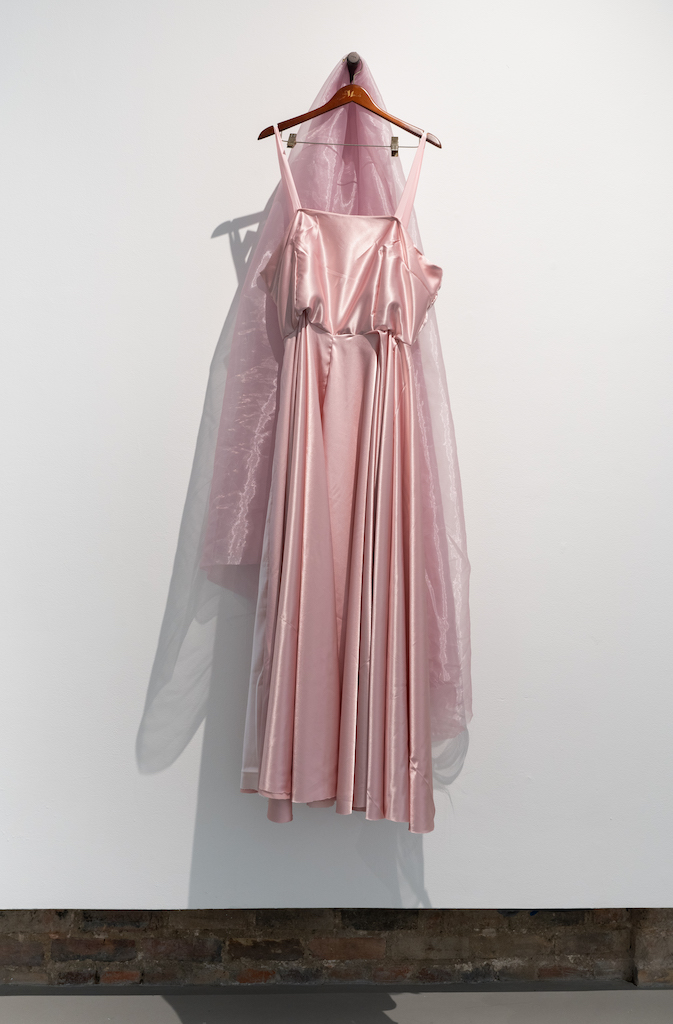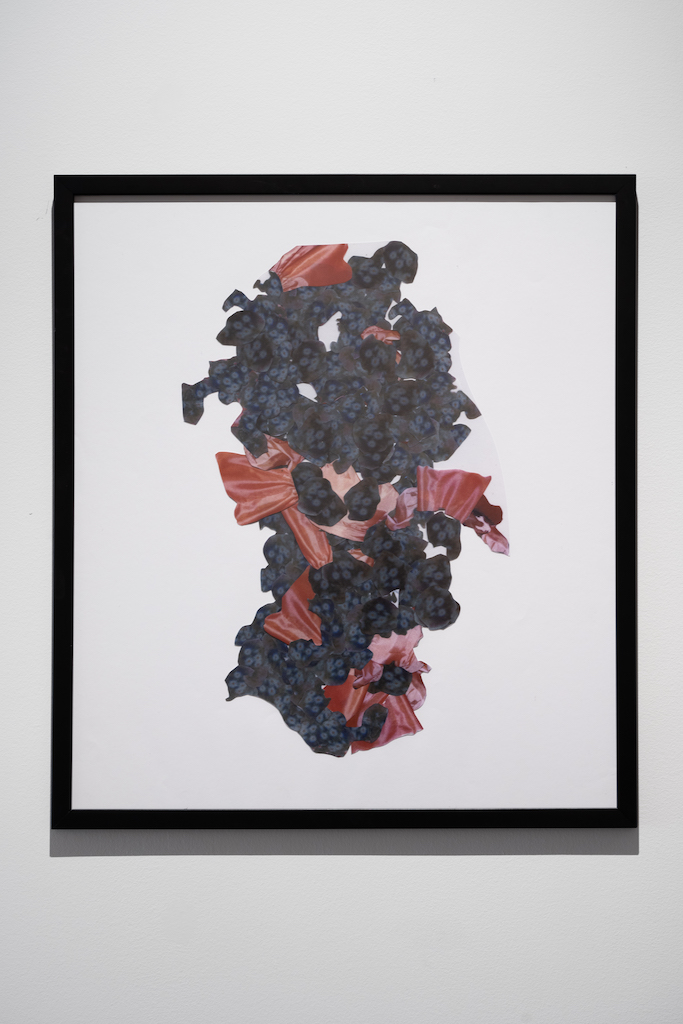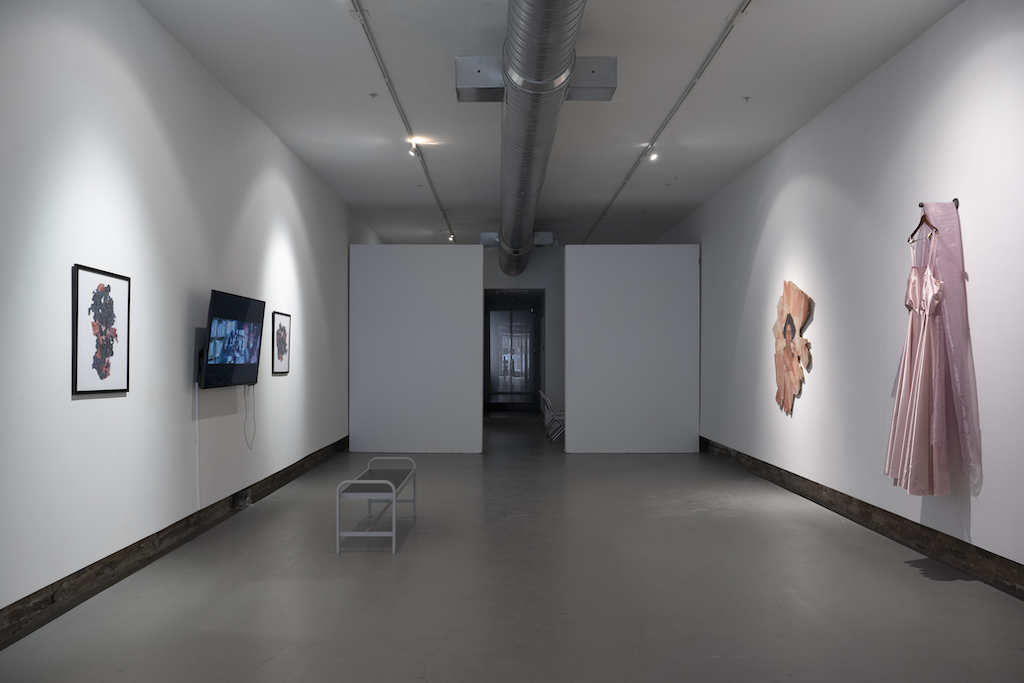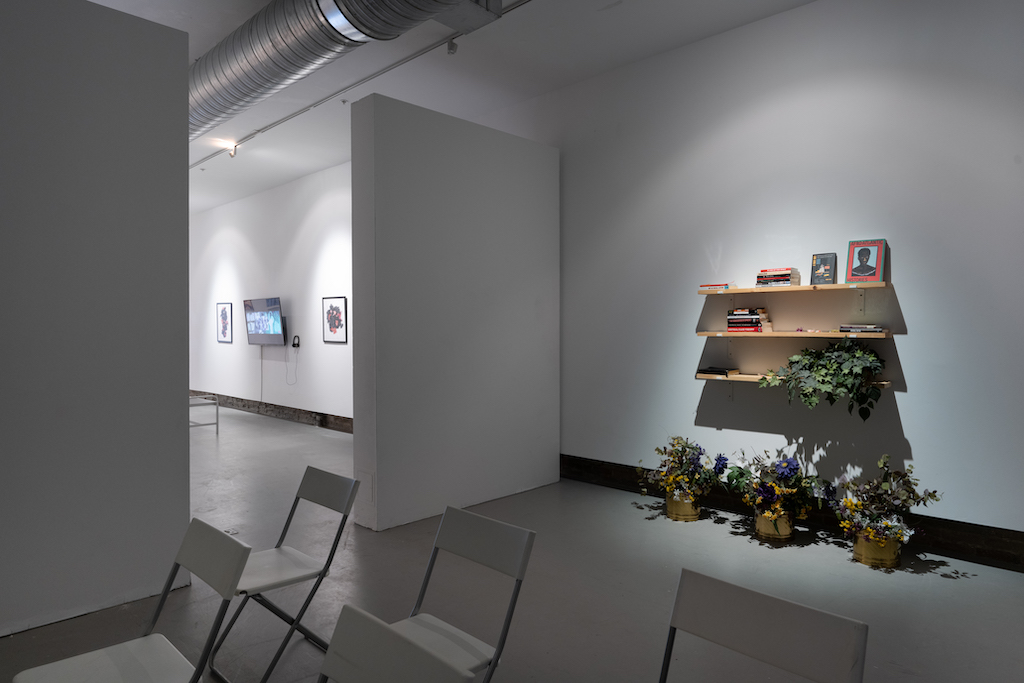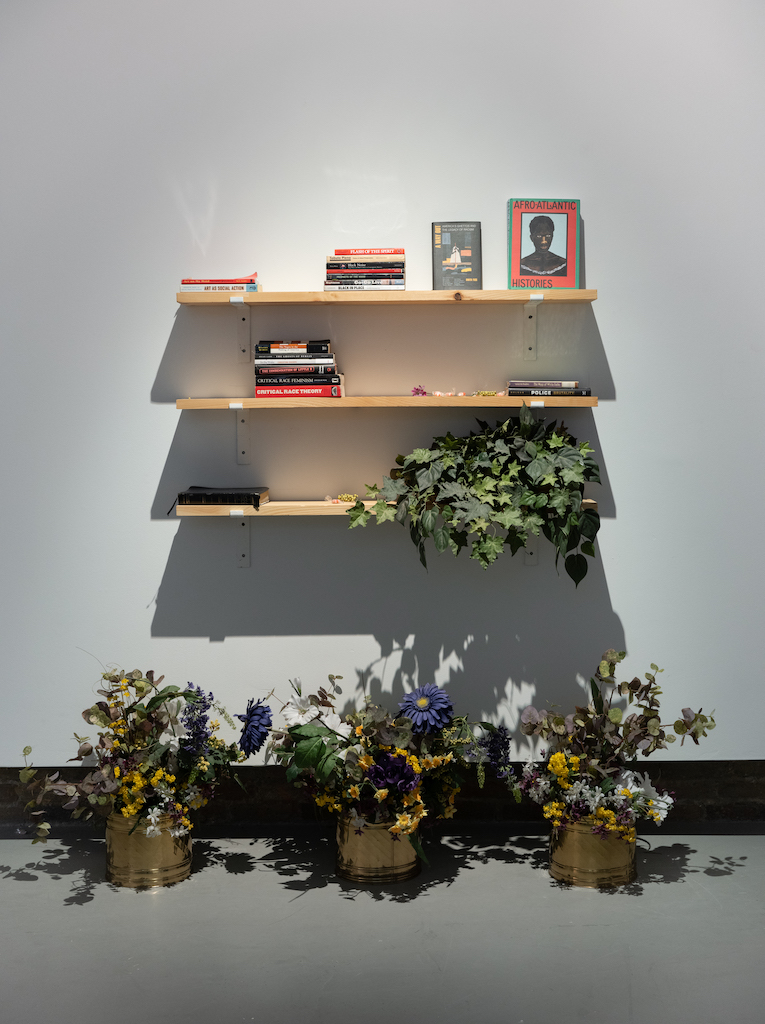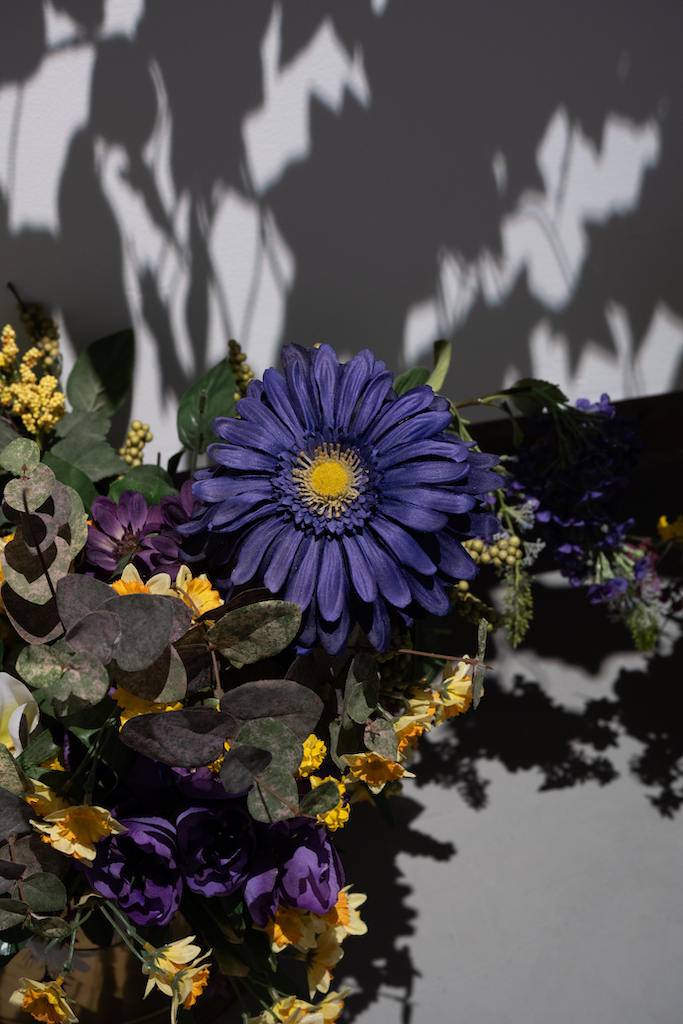Lionel Frazier White III’s solo show Beyond the Frame is a subtle exploration of the lived experience within a gentrifying city through photography, video work, and found objects. White is one of five fellows for 2020-22 at Hamiltonian Artists, which provides a stimulating environment, guidance, and a stepping stone for emerging artists. Themes of fragmentation, remembrance, and celebration flow through White’s varied yet cohesive body of work. As I pass through the space, images and objects implode, change, and become re-assembled.
Core to White’s body of work are family photographs in antiqued frames that offer a glimpse of his past within DC, where he was born and currently lives. These moments of intimate history portray stories of people within the city’s wider social fabric. While some works are simply enlarged photographs like “Hall of Grads” and “No title,” others are layered with soft white translucent paint which appears like a veil.
This motif of a veil is referenced across several works through white paint and the picture of actual fabric, and it may be a nod to W.E.B. Du Bois’s writing about “the veil.” For Du Bois this symbolized the barrier that exists between Black and white people and hinders an authentic understanding and equality between them. This subtle allusion feels essential since it grounds White’s work in both lived experience and historical theory. Furthermore, its repetition not only drives the point home, but also serves as a guiding idea.
